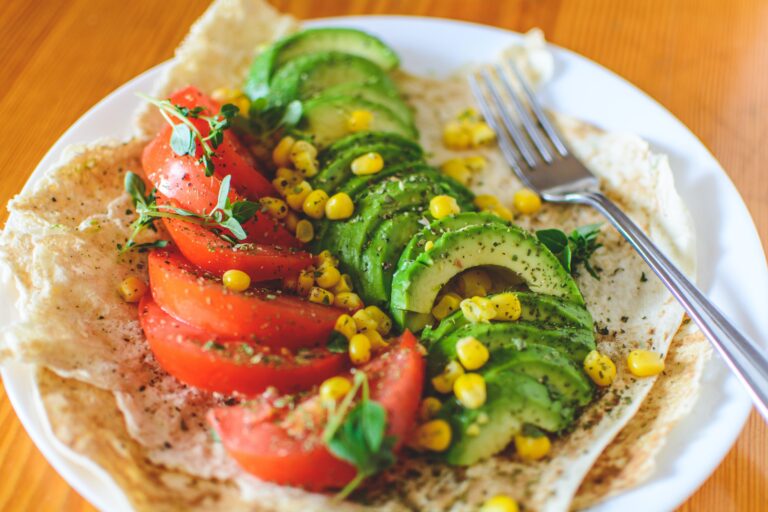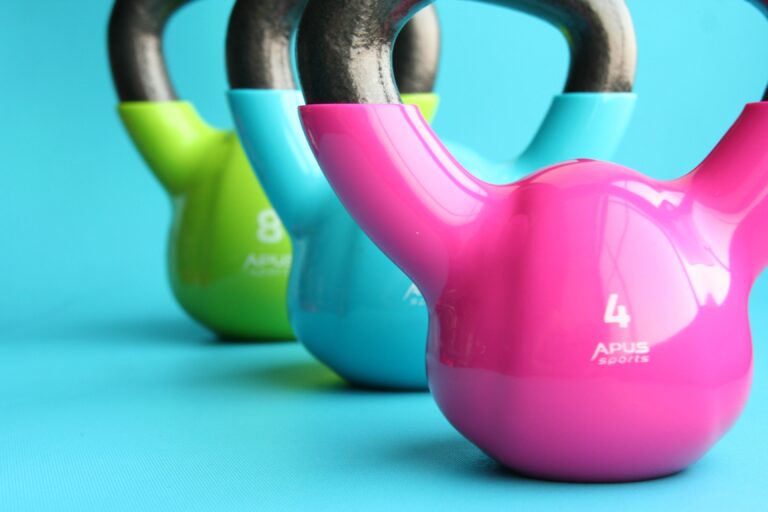The Ultimate Guide to Weight Loss Managemen Eating Green Vegetables

Weight Loss and Green Vegetables
Are you looking to shed some extra pounds and improve your overall health? Look no further than your plate. Incorporating green vegetables into your diet can be a game-changer when it comes to weight loss management. These nutrient-packed powerhouses are low in calories and high in fiber, making them the perfect addition to any weight loss plan. In this comprehensive guide, we will explore the benefits of eating green vegetables for weight loss, and we will highlight the top 12 green vegetables recommended by dietitians. So, let’s dive in and discover how green vegetables can help you achieve your weight loss goals.
Why Green Vegetables for Weight Loss?
When it comes to weight loss, creating a calorie deficit is key. Green vegetables can help you achieve this goal as they are low in calories and high in fiber. Fiber is an essential nutrient that aids in weight loss by keeping you feeling full and satisfied for longer periods, thus reducing the chances of overeating. Additionally, fiber slows down the digestion process, which can help regulate blood sugar levels and prevent spikes and crashes that may lead to cravings and overeating.
Moreover, green vegetables are rich in essential vitamins, minerals, and antioxidants that support overall health and well-being. These nutrients help optimize your metabolism, promote healthy digestion, and support the body’s natural detoxification processes. By incorporating green vegetables into your diet, you’re not only nourishing your body but also boosting your weight loss efforts.
The Top 12 Green Vegetables for Weight Loss
Here are the top 12 green vegetables recommended by dietitians for weight loss:
1. Cauliflower
Cauliflower is a versatile and nutritious vegetable that is gaining popularity in the world of weight loss. With only 27 calories per cup, cauliflower is an excellent low-calorie option. It is also high in fiber, providing you with a feeling of fullness while keeping your calorie intake in check. Whether roasted, mashed, or used as a rice substitute, cauliflower is a delicious and nutritious addition to any weight loss meal plan.
Nutrition Facts:
- Calories: 27 kcal
- Carbohydrates: 5 g
- Fiber: 2 g
- Sugar: 2 g
- Protein: 2 g
- Total fat: 0 g
2. Spaghetti Squash
If you’re a pasta lover looking to cut back on calories, spaghetti squash is a fantastic alternative. This winter squash has only 42 calories per cup and is low in fat. With its stringy texture resembling spaghetti, it can be used as a substitute in your favorite pasta dishes. Spaghetti squash is also rich in fiber, making it a filling and nutritious choice for weight loss.
Nutrition Facts:
- Calories: 42 kcal
- Carbohydrates: 10 g
- Fiber: 2 g
- Sugar: 4 g
- Protein: 1 g
- Fat: 0.5 g
3. Avocado
Despite being technically a fruit, avocados are a fantastic addition to a weight loss diet. Their high content of heart-healthy monounsaturated fats helps keep you feeling full and satisfied. Avocados are also a great source of fiber, with half an avocado containing 5 grams. Their versatility allows you to enjoy them in various ways, from adding them to salads and sandwiches to using them as a creamy base for smoothies.
Nutrition Facts:
- Calories: 120 kcal
- Carbohydrates: 6.5 g
- Fiber: 5 g
- Sugar: 0 g
- Protein: 1.5 g
- Fat: 11 g
4. Cabbage
Cabbage is a low-calorie vegetable that is high in fiber, making it an excellent choice for weight loss. With only 22 calories per cup, cabbage provides a satisfying volume while contributing minimal calories to your overall intake. This cruciferous vegetable is also packed with phytonutrients that have been linked to cancer prevention and reducing inflammation. Enjoy cabbage in salads, slaws, stir-fries, or even fermented dishes like kimchi.
Nutrition Facts:
- Calories: 22 kcal
- Carbohydrates: 5 g
- Fiber: 2 g
- Sugar: 3 g
- Protein: 1 g
- Fat: 0 g
5. Zucchini
Zucchini is a low-calorie vegetable that adds fiber, volume, and nutrients to your diet without significantly impacting your calorie intake. With only 19 calories per cup, zucchini is a weight loss-friendly option that can be incorporated into various dishes. Whether grated into oatmeal, added to smoothies, or substituted for pasta in “zoodles,” zucchini is a versatile vegetable that can help you achieve your weight loss goals.
Nutrition Facts:
- Calories: 19 kcal
- Carbohydrates: 3.5 g
- Fiber: 1 g
- Sugar: 3 g
- Protein: 1.5 g
- Fat: 0.5 g
6. Romaine Lettuce
Romaine lettuce is a low-calorie vegetable that can be a valuable addition to your weight loss journey. With only 8 calories per cup, romaine lettuce provides a satisfying crunch without adding significant calories. While it may not be the highest in fiber compared to other green vegetables, its versatility makes it an excellent choice for creating wholesome salads and lettuce wraps.
Nutrition Facts:
- Calories: 8 kcal
- Carbohydrates: 1.5 g
- Fiber: 1 g
- Sugar: 0.5 g
- Protein: 0.5 g
- Fat: 0 g
7. Green Peas
Green peas are a starchy vegetable that offers a unique combination of fiber and protein. With 117 calories per cup, green peas provide 8 grams of fiber and 8 grams of protein. Protein has been shown to promote satiety and increase the number of calories burned during digestion, making green peas an excellent choice for weight loss. Enjoy them in soups, stir-fries, or as a side dish.
Nutrition Facts:
- Calories: 117 kcal
- Carbohydrates: 21 g
- Fiber: 8 g
- Sugar: 8 g
- Protein: 8 g
- Fat: 0.5 g
8. Kale
Kale is a nutrient-dense leafy green vegetable that offers numerous health benefits, including weight loss support. With only 7 calories per cup, kale is incredibly low in calories and high in fiber. Its rough texture requires more chewing, which can help slow down your eating pace and promote a sense of fullness. Kale can be enjoyed in salads, smoothies, or as a side dish.
Nutrition Facts:
- Calories: 7 kcal
- Carbohydrates: 1 g
- Fiber: 1 g
- Sugar: 0 g
- Protein: 0.5 g
- Fat: 0 g
9. Spinach
Spinach is a versatile and nutrient-rich green vegetable that is often praised for its health benefits. With only 6 calories per cup, spinach is an incredibly low-calorie option that can be enjoyed in various dishes. Whether added to salads, smoothies, or cooked as a side dish, spinach provides a good source of fiber and essential vitamins and minerals.
Nutrition Facts:
- Calories: 6 kcal
- Carbohydrates: 1 g
- Fiber: 0.7 g
- Sugar: 0 g
- Protein: 1 g
- Fat: 0 g
10. Carrots
Carrots, although not traditionally considered a green vegetable, are an excellent addition to any weight loss plan. With 52 calories per cup, carrots are relatively low in calories and packed with fiber. The fiber content helps promote satiety and prevents overeating. Carrots can be enjoyed raw as a snack, shredded in salads, or roasted as a side dish.
Nutrition Facts:
- Calories: 52 kcal
- Carbohydrates: 12 g
- Fiber: 3.5 g
- Sugar: 6 g
- Protein: 1 g
- Fat: 0 g
11. Bell Peppers
Bell peppers are not only colorful and flavorful but also a great choice for weight loss. With only 24 calories per cup, bell peppers provide a satisfying crunch and are high in vitamin C. Research has shown that individuals with lower vitamin C levels tend to have higher amounts of body fat. Enjoy bell peppers raw as a snack, in salads, or cooked in various dishes.
Nutrition Facts:
- Calories: 24 kcal
- Carbohydrates: 5.5 g
- Fiber: 2 g
- Sugar: 4 g
- Protein: 1 g
- Fat: 0.3 g
12. Broccoli
Broccoli is a cruciferous vegetable packed with essential nutrients and compounds that support weight loss. With only 54 calories per cup, broccoli provides a good amount of fiber and protein. Its high water content adds bulk to your meals, making you feel fuller for longer. Whether steamed, roasted, or added to stir-fries, broccoli is a versatile vegetable that can be enjoyed in various ways.
Nutrition Facts:
- Calories: 54 kcal
- Carbohydrates: 11 g
- Fiber: 5 g
- Sugar: 2 g
- Protein: 3.7 g
- Fat: 0.5 g
How to Incorporate Green Vegetables into Your Diet
Now that you know the top green vegetables for weight loss, let’s explore some practical tips on how to incorporate them into your diet:
- Make salads your go-to: Create delicious and nutrient-packed salads by combining a variety of green vegetables with lean proteins, healthy fats, and a flavorful dressing.
- Swap out pasta for veggie alternatives: Use spaghetti squash or zucchini noodles as a low-calorie substitute for traditional pasta.
- Try green smoothies: Blend green vegetables like spinach or kale with fruits, yogurt, and a liquid of your choice for a refreshing and nutritious smoothie.
- Roast your veggies: Roasting green vegetables like broccoli and cauliflower can bring out their natural flavors and add a delicious crunch to your meals.
- Experiment with stir-fries: Add a mix of green vegetables to your stir-fries for a colorful and nutritious meal. Pair them with lean proteins such as chicken, tofu, or shrimp.
- Include greens in your wraps: Wrap your favorite fillings in large lettuce leaves or collard greens for a low-carb and nutrient-packed alternative to traditional wraps.
- Snack on raw veggies: Keep a selection of raw green vegetables, such as cucumber or bell pepper slices, on hand for a quick and healthy snack.
Remember to listen to your body’s hunger and fullness cues and adjust your portion sizes accordingly. Incorporating green vegetables into your diet is a sustainable and enjoyable way to support your weight loss journey.
Conclusion
Incorporating green vegetables into your weight loss management plan can have a significant impact on your overall health and well-being. These nutrient-packed powerhouses are low in calories, high in fiber, and rich in essential vitamins and minerals. Whether you’re enjoying a vibrant salad, savoring a roasted vegetable medley, or blending a refreshing smoothie, green vegetables offer endless possibilities for delicious and nutritious meals. So, start adding more green to your plate and watch the pounds melt away while nourishing your body with the goodness of nature’s bounty.
Remember, weight loss is a journey, and it’s essential to approach it with a well-rounded lifestyle that includes regular physical activity, mindful eating, and a positive mindset. With the guidance of a healthcare professional or registered dietitian, create a personalized weight loss plan that suits your individual needs and preferences. Stay consistent, be patient, and celebrate every small milestone along the way. Here’s to your health and success!
“The only way to lose weight is to check it as airline baggage.” – Peggy Ryan






